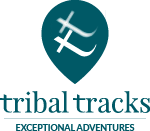
When nature calls!
This is one of the most common questions we get asked, though we know that talking about it can be considered embarrassing. We've put this guide together for you to read at your leisure and hopefully address any worries, concerns or curiosities ahead of your trek.
Remember that your toilet habits may change while you are on an expedition. You will be experiencing many out-of-the-ordinary circumstances.
This could be simply a change in routine leading to a confused 'body clock'. It could be due to jet lag or travel anxiety. It could be 'shyness' around toileting around other people. Your body might be holding on to fluids to avoid dehydration and constipation; the list goes on.
The easy (number) one!
Urinating outdoors is pretty straightforward, although there are things you can do to make the 'situation' more comfortable for you, your trek and camp mates, and the environment.
Disposing of solids requires a bit of planning. It is especially important in cold environments where it is more difficult for excrement to degrade, but there are several reasons why it is important to minimise the impact of human waste on the environment full stop.
Obviously, we don't want other trekkers finding or treading in it and we don't want unnatural chemicals (from our food) or harmful bacteria entering places they shouldn't.
Sometimes, nature's timings don't play ball, and you may find yourself on your period during your trek.
If you don't already track your cycle, it might be a good idea to start doing so in the months before your trek so you know when to expect your period's arrival, and you can plan accordingly. Remember to bring enough menstrual products with you on your trek. Carry them in a waterproof bag to prevent accidental waste.
You might want to consider using a menstrual cup, as they typically reduce the frequency of changes. This would be the best option if you're retiring to a gite, tearoom, or hotel with running water where you can rinse your cup with clean water — check your Tribal Tracks itinerary for your accommodation information.
Never bury sanitary items, as with toilet paper, carry everything away with you until you find a suitable bin. Double bag your waste.
As always, wash or sanitise your hands thoroughly and regularly.
Feel free to drop us an email if you have any questions or advice you think we've missed and may help other trekkers.
Have a question about Tribal Tracks? Get in touch, our small team will be delighted to help.